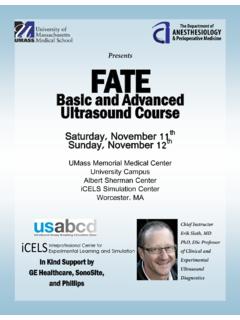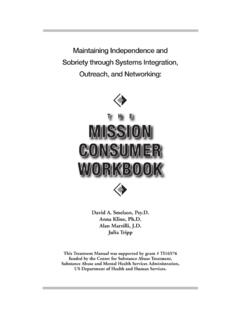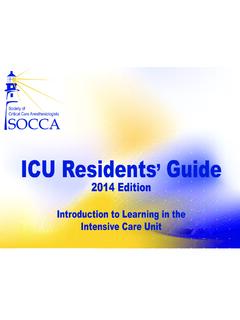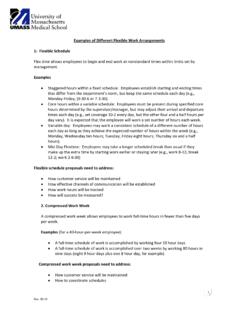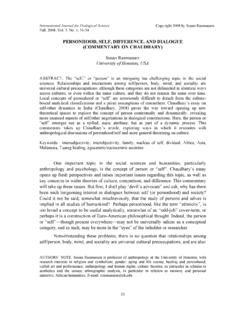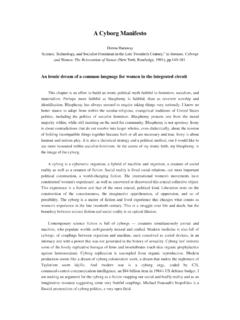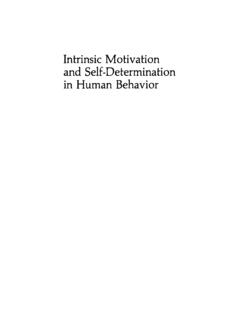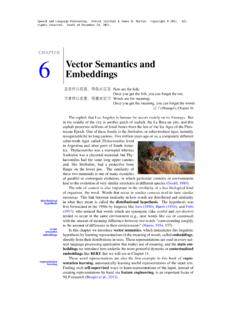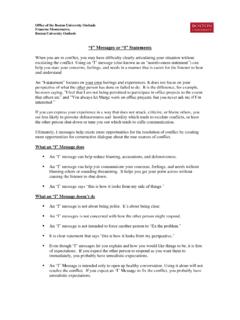Transcription of THE KEY ELEMENTS OF DIALOGIC PRACTICE IN OPEN …
1 Olson, M., Seikkula, J., & Ziedonis, D. Version : September 2, 2014 Page 1 Mary Olson, * Jaakko Seikkula, # Douglas Ziedonis, , MPH* * University of Massachusetts Medical School, USA # University of Jyv skyl , Finland This work has been supported by a grant from the Foundation for Excellence in Mental Health Care awarded to Dr. Ziedonis at the University of Massachusetts Medical School. The intent of this document is to support the development of an open dialogue PRACTICE for whole teams participating in open dialogue meetings, for supervision and training purposes, and for helping in systematic research. These teams can also be used for self-reflection by an individual practitioner. The authors share the copyright of this work. The material may be distributed in whole with the authors permission. Please contact Dr. Ziedonis if you are interested in translating this work to another language. This work should be cited as follows: Olson, M, Seikkula, J.
2 & Ziedonis, D. (2014). The key ELEMENTS of DIALOGIC PRACTICE in open dialogue . The University of Massachusetts Medical School. Worcester, MA. September 2, 2014 Version THE KEY ELEMENTS OF DIALOGIC PRACTICE IN open dialogue : FIDELITY CRITERIA Olson, M., Seikkula, J., & Ziedonis, D. Version : September 2, 2014 Page 2 Introduction DIALOGIC PRACTICE arose from open dialogue as an approach to help persons and their families feel heard, respected, and validated. Starting in 1984, at Keropudas Hospital in Tornio, Finland, staff already trained in family therapy decided to change the way inpatient admissions were handled. Following the work of Yrj Alanen (1997), they altered their response to acute crises by having a network meeting, bringing together the person in distress, their family, other natural supports, and any professionals involved, in advance of any decision about hospitalization. This was the birth of a new, open PRACTICE that evolved in tandem with continued clinical innovation, organizational change, and research--into what has come to be known as open dialogue , first described as such in 1995 (Aaltonen Seikkula, & Lehtinen, 2011; Seikkula et al.)
3 , 1995). The openness of open dialogue refers to the transparency of the therapy planning and decision-making processes, which take place while everyone is present. (It does not mean that families are forced to talk about issues therapists think they should be open about.) From the outset, this network approach was for all treatment situations. Over a ten-year period, this formerly traditional inpatient facility in Tornio was transformed into a comprehensive psychiatric system with continuity of care across community, outpatient, and inpatient settings. The PRACTICE of open dialogue thus has two fundamental features: (1), a community-based, integrated treatment system that engages families and social networks from the very beginning of their seeking help; and (2), a DIALOGIC PRACTICE , or distinct form of therapeutic conversation within the treatment meeting. This current document divides DIALOGIC PRACTICE into twelve ELEMENTS that describe the approach of the therapist(s) in the treatment meeting to the person, their network, and all the helpers.
4 The treatment meeting constitutes the key therapeutic context of open dialogue by unifying the professionals and the network into a collaborative enterprise. Thus, DIALOGIC PRACTICE is embedded in a larger psychiatric service that shares its premises, because it is essential to have both aspects. The open dialogue approach is an integrative one in which other therapeutic modalities (Ziedonis, Fulwiler, Tonelli, 2014; Ziedonis et al, 2005; Ziedonis 2004) can be added, adapted to the needs of the person and family, as part of an unfolding and flexible treatment web (Hald, 2013; Seikkula & Arnkil 2014). Olson, M., Seikkula, J., & Ziedonis, D. Version : September 2, 2014 Page 3 There are seven basic principles of open dialogue , which are the overarching guidelines that the Finnish team originally proposed (Seikkula et al., 1995). The principles are listed in the Table below: TABLE 1: The Seven Principles of open dialogue IMMEDIATE HELP SOCIAL NETWORK PERSPECTIVE FLEXIBILITY AND MOBILITY RESPONSIBILITY PSYCHOLOGICAL CONTINUITY TOLERANCE OF UNCERTAINTY dialogue (& POLYPHONY) Relevant both to open dialogue as a form of therapy and a system of care, these seven principles represent the broad set of values, on which the more finely focused twelve fidelity ELEMENTS of DIALOGIC PRACTICE are based.
5 For the purposes of this discussion on DIALOGIC PRACTICE , the two principles of dialogue (polyphony) and tolerance of uncertainty will be given special attention as the foundation of therapeutic conversation within the treatment meeting. The other five of the seven principles, which emphasize the organizational features of the system, will be explicated in another document on organizational change and the system fidelity characteristics (Ziedonis, Seikkula, & Olson, in preparation). This companion document on organizational change will describe different ways that the open dialogue principles and the treatment meeting have been integrated into clinical PRACTICE , treatment programs, agencies, and systems of care. Olson, M., Seikkula, J., & Ziedonis, D. Version : September 2, 2014 Page 4 In the current document on DIALOGIC PRACTICE , the seven basic principles of open dialogue are not all covered in full detail; however they are elaborated in other readily accessible source documents (Seikkula & Arnkil, 2006; Seikkula & Arnkil, 2014).
6 The following discussion will focus on the twelve, key ELEMENTS of fidelity to DIALOGIC PRACTICE that characterize the therapeutic, interactive style of open dialogue in face-to-face encounters within the treatment meeting. Olson, M., Seikkula, J., & Ziedonis, D. Version : September 2, 2014 Page 5 DIALOGIC PRACTICE : AN OVERVIEW To be in a transformative dialogue with people requires presence, an attention to the living moment without a preconceived hypothesis or specific agenda. The art and skill of DIALOGIC PRACTICE means that the therapists communications are not formulaic. open dialogue involves being able to listen and adapt to the particular context and language of every exchange. For this reason, it is not possible here to make specific recommendations for sessions in advance, or for invariant phases in the treatment process. Prescribing this form of detailed structure could actually work against the process of open dialogue .
7 It is the unique interaction among the unique group of participants engaging in an inevitably idiosyncratic therapeutic conversation that provides the possibilities for positive change. At the same time, there are systematic ELEMENTS of DIALOGIC PRACTICE . In this way, there is a paradox. While every dialogue is unique, there are distinct ELEMENTS , or conversational actions on the part of the therapists, that generate and promote the flow of dialogue and, in turn, help mobilize the resources of the person at the center of concern and the network. This is what we mean by the key ELEMENTS . They will be defined and described below. DIALOGIC PRACTICE is based on a special kind of interaction, in which the basic feature is that each participant feels heard and responded to. With an emphasis on listening and responding, open dialogue fosters the co-existence of multiple, separate, and equally valid voices, or points of view, within the treatment meeting.
8 This multiplicity of voices within the network is what Bakhtin calls polyphony. In the context of a tense and severe crisis, this process can be complex, requiring sensitivity in bringing forth the voices of those who are silent, less vocal, hesitant, bewildered, or difficult to understand. Within a polyphonic conversation, there is space for each voice, thus reducing the gap between the so-called sick and well. The collaborative exchange among all the different voices weaves new, more shared understandings to which everyone contributes an important thread. This results in a common experience which Bakhtin describes as without rank. As stated above, by calling a sequence dialogical, we mean specifically that the sequence has the potential for a person to feel heard, which is the beginning of any change. Evaluating the dialogical quality of a conversation means, first and foremost, evaluating the responsiveness of the therapists.
9 Among the first steps is often for one of the therapists to engage with the person at the center of the crisis in a careful, detailed, back-and-forth interchange. The purpose is to listen and, as necessary, assist in finding words for the person s distress, Olson, M., Seikkula, J., & Ziedonis, D. Version : September 2, 2014 Page 6 otherwise embodied in symptoms, and evolve toward a common language. As illustrated below, having input from the network assists in shedding further light on the nature of the crisis. The dialogical therapist invites each person in the meeting to share their perspective and the various, related issues that come up during the conversation. Instead of looking at therapists skills in terms of the way they conduct a structured interviewing methodology, the principal criterion is the often personal way the therapists respond to the afflicted person s utterances and those of others present in the meeting.
10 Responding and Reflecting There are two fundamental skills required for clinicians to do DIALOGIC PRACTICE : the skill of responding and the skill of reflecting (Rober, 2005). The skill of responding is a three-part process that applies to the way all the fidelity ELEMENTS are employed. This process must be present to call an exchange dialogical. While defining the quality of the therapist s action, one has to look at the (1) client s initial utterance; (2) the therapist s response to that utterance; and (3) the response to the response given. How does the therapist s response further the experience of each participant in being heard, understood, and acknowledged? How do these three steps generate dialogically responsive interaction? The other basic skill of DIALOGIC PRACTICE the skill of reflecting--is the ability to engage in an open , participatory, transparent, and jargon-free conversation with the network and other professionals in the meeting.

